Klapa Groups from Lastovo Perform in Former Military Tunnel
Lastovo in southern Dalmatia is one of the closest things to heaven on earth as one can get. This still underrated little island tends to keep itself to itself despite its relatively close proximity to Dubrovnik, but it has a lot to be boasting about.
Klapa music is by far one of the most characteristic parts, or sounds, rather, of Dalmatia. This type of traditional capella singing is one of Dalmatia's top trademarks and no visit to the coast is complete without hearing and witnessing a klapa performance.
Translating to ''group of friends'', there are often several klapa music bands per location, even in small villages. This type of singing can trace its roots back to church singing, and the most common subjects of the songs are love, the Adriatic, drinking wine and a love for Croatia, or sometimes more specifically the town from which the group originates.
As Morski writes on the 29th of May, 2019, the female klapa group ''Ladesta'' and the male klapa group ''Fumari'' held a concert in no less than a very atmospheric former military tunnel located in Kremena bay on the islet of Prežba, an uninhabited place located just northwest of Lastovo, under the organisation of the only hotel complex on the whole of Lastovo, hotel Solitudo.
Guests of the island, as well as the local population, enjoyed and sang along with the klapa music in the unique ambience of this old Lastovo military tunnel. The ambience and the natural acoustics of this newly-discovered "stage" helped to well and truly fill the entire tunnel with the sound of the klapa singing, as well as the singing of the birds and the soft lapping of the calm Adriatic sea, leaving the audience more than satisfied with this rather unique experience.
The audience, which was made up of both visitors to Lastovo and locals didn't hide their obvious enthusiasm, and every new performance from "Fumari" and "Ladesta" was met with a strong and appreciative round of applause.
''The greatest wealth of tourism are people, then history and culture, and there's a lot on Lastovo. The concept we care about is the concept of ethical tourism, which implies respect for natural, cultural and historical values and above all, respect for the local community,'' stated the hotel manager of Lastovo's Solitudo, Željko Kurta.
With small but certain steps, beautiful Lastovo in southern Dalmatia is managing to balance stubbornly guarding its sheer beauty, rich traditions, and its impressive culture and history while still opening up its green heart to visitors.
Make sure to follow our dedicated lifestyle page for much more.
New Dubrovnik Area Project to Connect Lokrum and Trsteno Arboretum
The City of Dubrovnik, the wider area of Dubrovnik-Neretva County and southern Dalmatia as a whole has a lot to offer when it comes not only UNESCO heritage, culture and history, but in terms of nature, too. From the beautiful island of Lokrum to Trsteno Arboretum, there's a lot to see and much better connections to be had.
As Morski writes on the 29th of May, 2019, the "Historical Gardens of the Dubrovnik Region" project was presented at Dubrovnik's City Hall during a press conference. The aim is to contribute to socio-economic development and raise awareness of the importance of protecting the natural heritage and the environment of this southern Dalmatian county.
The three-year project, worth 15.5 million kuna, initially began on the 1st of December 2018 and was co-financed with funds from the European Regional Development Fund in the amount of seventy percent, as was emphasised by Ivica Grilec of the Lokrum Reserve. He also announced a series of project activities.
The aim is to create a new tourist product based on two scenic natural heritage sites - The Trsteno Arboretum (Trsteno) and the much loved Botanical Garden located on the island of Lokrum, which lies just off the coast of the City of Dubrovnik.
''We'll establish a new line between these two locations with a new ship with a capacity of fifty passengers at a value of 2.2 million kuna to increase the number of visitors to the Arboretum,'' added Grilec.
Zrinka Raguž of the UO for European Funds and International Cooperation emphasised the value of the announced activities in the context of Dubrovnik's city project "Respect the City".
''This city administration has proven its orientation towards the use of European funds, which has spread to our institutions. I'm delighted with the fact that the Lokrum Reserve is involved in this and that this project will lean on the city project Respect the City, because it will enable us to disperse our tourist offer. I believe that the realisation [of this project] will be successful for the benefit of the local population, as well as the numerous guests who visit our city,'' stressed Raguž.
Trsteno Arboretum's director Ivan Šimić, emphasised the fact that linking these two historical areas of the wider Dubrovnik area is extremely important for increasing the number of visitors to the arboretum. The project's activities set out the establishment of a thematic and educational trail through the historic arboretum's olive grove among other things.
Romana Vlašić of Dubrovnik's tourist board explained the role of the tourst board in the project through the design of three tourist packages to be offered to travel agencies, which will include all of the project activities.
Make sure to follow our dedicated travel and lifestyle pages for much more. If it's just Dubrovnik and the extreme south of Dalmatia you're interested in, give Total Dubrovnik a follow or check out Dubrovnik in a Page.
New Breakwater and Waterfront On the Cards for Sali, Zadar County
As Morski writes on the 29th of May, 2019, the construction of a coastal belt and the new breakwater is a new project of the Zadar County Port Administration in the ports of the Zadar region's islands which are now waiting for the necessary construction permits, as well as to be registered as candidates for funding from the Croatian Ministry of Maritime Affairs, Transport and Infrastructure within the scope of the "Competitiveness and Cohesion 2014-2020" program.
The above project is worth a massive thirty million kuna, with the investor, the Zadar County Port Authority, accounting for 75 percent of the investment within this program. Currently, the largest port facility operation in Zadar County, the construction of a ferry port in Tkon on the island of Pašman, is funded mostly by money from the aforementioned fund, Zadarski.hr writes.
With this investment, the northern shore of the harbour or the bay in Sali will be extended and properly arranged in the length of an additional 150 metres, while the new breakwater which is also set to be constructed in Sali will be 114.5 metres in length.
The new pier will fully protect the Sali's harbour, and thus far more securely, from potentially damaging and strong southeastern winds, and the new shoreline and breakwater will provide new berths for the transit needs of Sali's local harbour within a concession held by the Sali-based communal company "Mulić".
Davor Škibola, the director of ŽLU Zadar, said that all preparations for the realisation of this project could be completed by the end of this year, and that things could be wrapped up at the time, or at the latest at the beginning of next year, when the construction of a new part of Sali's riva (waterfront) and the breakwater would finally begin.
Make sure to follow our dedicated lifestyle page for much more.
Šibenik-Knin County Financing Film About General Ante Gotovina
Ante Gotovina is much more than just a household name like that of an actor or a singer. This hero of the Homeland War was proclaimed innocent at The Hague and released back in 2012. He returned to Croatia and embarked on a normal life before becoming somewhat of an entrepreneur. Thesedays, Gotovina no longer dons a general's uniform, but instead deals in the raising of tuna through his own company.
As Gotovina enjoys the quiet life now, the stories of his heroic past in the face of war have never faded, and a film about him is set to be filmed with Šibenik-Knin County's very welcome financial support.
As Morski writes on the 28th of May, 2019, Šibenik-Knin County Prefect Goran Pauk has signed a co-financing contract for a feature film and the "General" TV series.
"This contract stipulates that Šibenik-Knin County is obliged to provide financial support in the amount of 100,000 kuna to the project of a feature-length film and drama television series called "General'', by the screenwriter and director Antun Vrdoljak in the production of Kiklop filma d.o.o. and Croatian Television,'' reads a quote from Šibenik-Knin County.
In the explanation, it is argued that the theme of the film and TV series is the Homeland War, to which Croatian cinematography still owes a lot, given the historical achievement of the creation of the democratic and independent Republic of Croatia, the fulfillment of a centuries-old dream of the Croatian people.
The film and TV series covers the the war and the life of General Ante Gotovina and his generation of Croatian defenders, detailing both the good times and the extremely bad ones.
"Most of all, because of those who have given us and all future generations the liberty that we've inherited today, the Croatian Defense Forces," they argue in their clarification of their decision to fund the film on Gotovina's life and deeds.
To briefly recall, filming was completed in Šibenik on January the 30th this year, and Šibenik native Goran Višnjić plays General Ante Gotovina.
Make sure to follow our dedicated lifestyle page for much more.
UNESCO Heritage of Croatia - Vis Archipelago UNESCO Global Geopark Croatia
May the 27th, 2019 - taking a closer look at beautiful Vis and its UNESCO heritage.
On the 17th of April, 2019, the UNESCO Executive Board approved the designation of eight new Global Geoparks which demonstrate the diversity of the planet’s geology. Croatia's Vis archipelago got this recognition. This article will take a closer look into some natural heritage from the stunning Vis archipelago.
The Vis archipelago covers the island Vis and the surrounding islands and islets Biševo, Sveti Andrija, Brusnik, Jabuka, and Palagruža. The archipelago is the area that has the oldest and youngest geological formations.
Some parts of the archipelago are made from volcanic rocks while most of the Adriatic islands are made from sedimentary rocks. Sailors and fishermen were always aware of this specific geological area. They knew when they would sail close to volcanic islets of Jabuka and Brusnik as their compass would divert from the north, potentially putting them in danger. Vis island has parts where the foundation is volcanic rock, which created several water springs. These springs created fertile conditions, so it's no wonder the ancient Greeks chose Vis about 2,400 years ago as the place to found their first colony on the Adriatic.
The Vis archipelago is located off the coast of Croatia, and there some of the oldest rocks in the Adriatic sea, formed 220 million years ago, can be found. Sedimentary rocks are the base for most of the Vis archipelago. The origin of these rocks comes from the lithification process of sand, mud, and sea organisms.
The north-eastern region of the archipelago includes large sand deposits formed in the Ice Age which created unique forms and caves. Before the sudden rise of the sea level 12000 years ago, these islands were much larger and extended more than twenty miles. In this extended area called Mala Palagruža, an archaeologist discovered flint quarries that served for the production of early tolls believed to have been made by the islands' first inhabitants.
The Vis archipelago is formed around Vis island and includes a number of nearby uninhabited islets: Ravnik, Budihovac, Veli Paržanj, Mali Paržanj, Greben, Host, Veli Barjak and Mali Barjak and the open sea islands among which the most remote are the island of Palagruža, inhabited only by lighthouse keepers, and the magmatic island of Jabuka, some 30 nautical miles west of Vis. The surface of this maritime area covers almost 6000km2 and also includes Sveti Andrija, Brusnik and the island of Biševo which, is the only inhabited island.
In this area, the largest number of ''monuments of nature'' in Europe can be found – Blue Cave, Monk Seal Cave, the volcanic islets of Jabuka and Brusnik, Stiniva Cove, and the Green Cave on the islet of Ravnik.
The Vis archipelago is a small area, but it boasts a wide range of significant landscapes and protected monuments of nature, some of which attract a lot of visitors.
The Blue Cave
In 1884, the Viennese painter baron Ugen Ransonnet introduced the Blue Cave on the island of Biševo to the world. His discovery marked the beginning of tourism in Dalmatia, and the Blue Cave has since become a must-see tourist spot in the Adriatic. The Blue Cave has been a protected geomorphological monument of nature since 1951. Visitors can go to the cave from Biševo Mezoporat. There are people all over the world visiting this unique cave every summer.
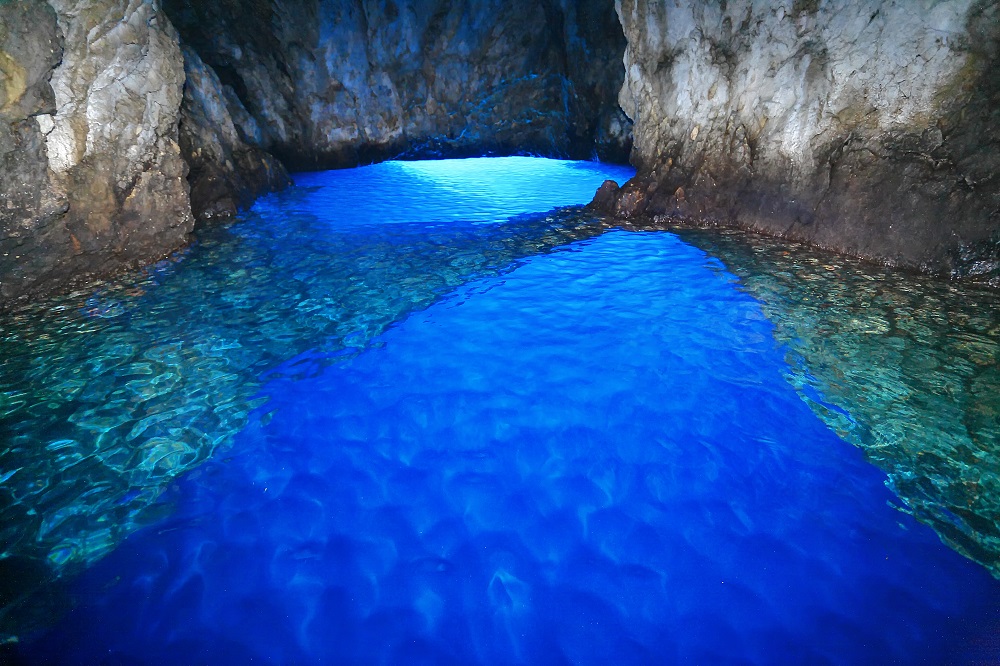
The Monk Seal Cave
The Monk Seal Cave is the longest sea cave in the Adriatic – 160 metres. It is a protected geomorphological monument of nature from 1967. The name comes from the Mediterranean monk seal which once lived here.
Jabuka islet
Rising above the sea like a black pyramid, the island is 30 nautical miles from Komiža, is 97 metres high, and is a protected geomorphological monument of nature from 1958. The island is composed of deep crust magmatic rocks, the magnetite of which interferes with seafarers’ compasses making navigation in conditions of poor visibility extremely difficult when near it. The underwater area is rich in fish and crabs, which is why fishermen from Komiža go to Jabuka in winter and risk their lives going to the island, which has no docks.
Jabuka doesn’t have a natural bay and doesn’t provide shelter from the wind. Anchoring a boat is a difficult task due to the deep sea around the island, and its smooth rocks polished by the sea make it impossible to tie the ship around them. There are as many as twenty toponyms here, and these are the only human traces on this further insular frontier of the eastern Adriatic. The island is made from volcanic diabase rocks and is home to the endemic black karst lizard and two endemic plants.
The Green Cave on the islet of Ravnik
This cave is a protected geomorphological monument of nature from 1967, and the islet itself is a significant landscape. The Green Cave has two large openings to it and it doesn’t give the same type of blue light effect as the Blue Cave, but it's entirely unique because it has a small opening in the middle from where sunlight breaks into the cave and lights up the sea bottom like a spotlight in the darkness. The blackness of this cave enhances the intensity of this miraculous spotlight.
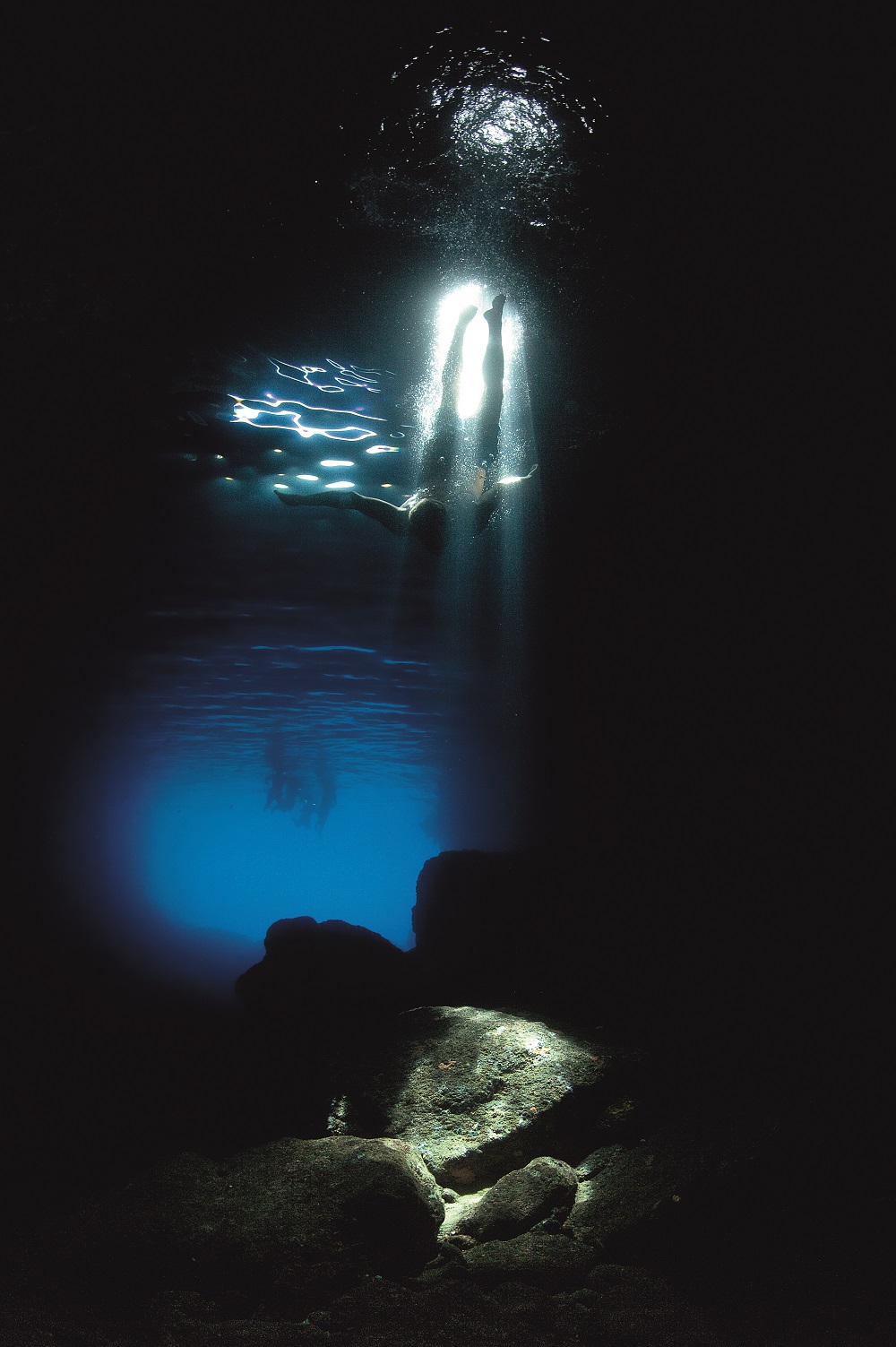
Stiniva bay
Stiniva bay has been classed as a significant landscape since 1967. This narrow and long bay ends with a stone ''gate'' leading into a small cove with a pebble beach surrounded by layered rock walls. Once, Stiniva was a karst cave and it probably collapsed several thousand years ago. In 2016, Stiniva was named the most beautiful beach in Europe.
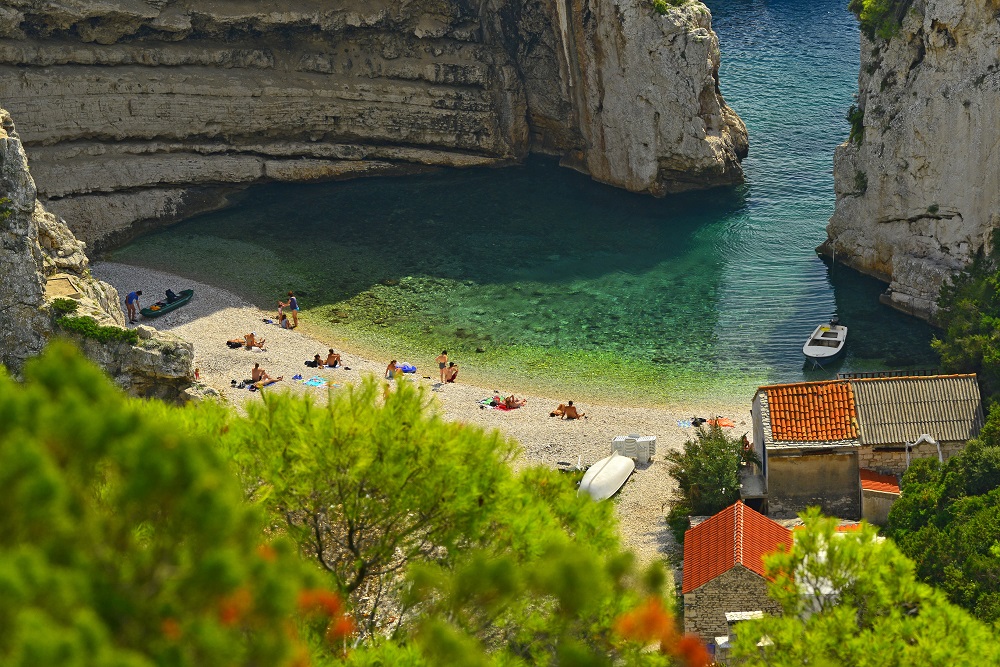
Ravnik islet
Ravnik islet is a significant landscape of nature and is located off the eastern coast of Vis, boasting its green cave.
Brusnik
Brusnik is the protected geomorphological monument of nature and is located thirteen nautical miles from Komiža. Brusnik and Jabuka are the only islands in the Adriatic formed from igneous rocks. It is 23 meters high, and both Brusnik and Jabuka are made of subvolcanic diabase formed by the crystallisation of magma on its way from the deep magmatic core up to the surface. Brusnik island is far more complex than Jabuka, however. Brusnik has paleo beach pebble conglomerates which can be found on the top of the island.
In the middle of the island, there is a ravine with a depression filled with seawater used by fishermen from Komiža, in which they made larger pools to keep their captured lobsters. There are also the remains of fishermens' cottages built from large rocks. These small homes were in use for salting fish in barrels and to keep the fishermen safe from the wind and sun. Brusnik has been a protected area since 1951 and it boasts a special structure – as most of the islands have a limestone base.
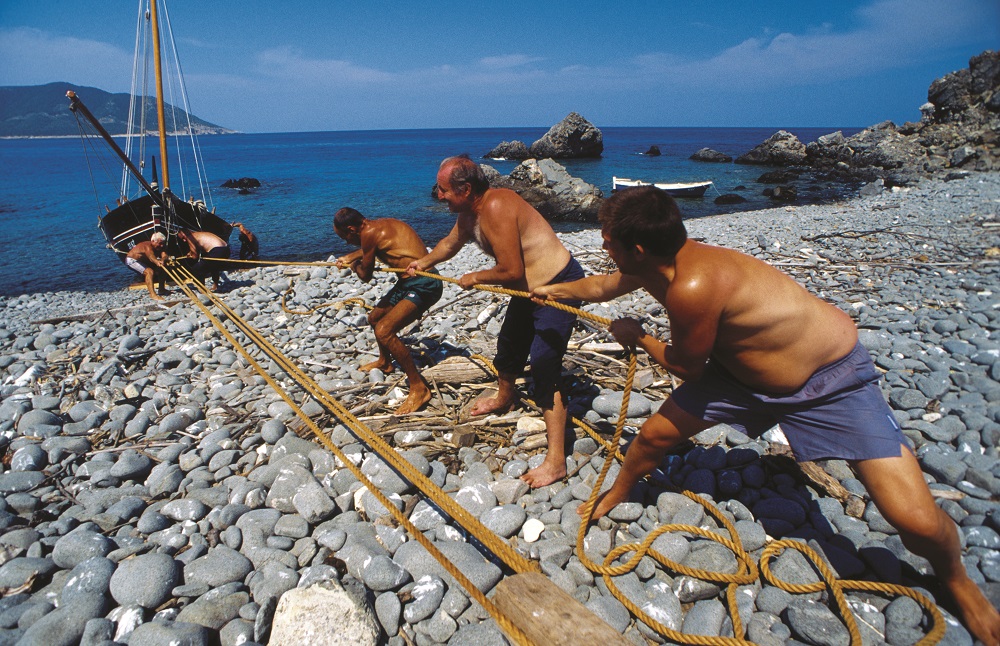
There are several geo-trails in Vis archipelago, here are a few handy links to them:
Geo trail Komiža: https://geopark-vis.com/en/geology/geo-trails
Geo trail Biševo: https://geopark-vis.com/en/geo-trail-bisevo
Geo trail Vis Rukavac: https://geopark-vis.com/en/geostaza-vis-rukavac
A list of geological locations can be found here: https://geopark-vis.com/en/geostaza-vis-rukavac
With this geological area, there are naturally a lot of local traditions and pieces of heritage worth knowing about. Some of the most valuable are Gajeta Falkuša, Suhozid – dry stone walling (another piece of Croatia's intangible UNESCO heritage), The local Vis dialect, Gajeta Falkuša, which is a traditional historical fishing boat. Fishing has been the traditional main occupation of local men from Komiža for centuries. Komiža fishermen are well known as the first to catch fish on the open sea and to face a lot of dangers due to poor weather conditions and pirate attacks.
Local inhabitants lived off the sea and were facing different threats. To fight the open sea and the risks that faced them, fishermen needed to have small and quick boats which could carry a lot in them too. To survive these rough conditions, they made falkuša – a unique traditional fishing boat from Komiža. It is made for fishing, sailing and cargo carrying. The name comes from the word falka, or the sideboards of the ship which enabled the boat to be used for different purposes.
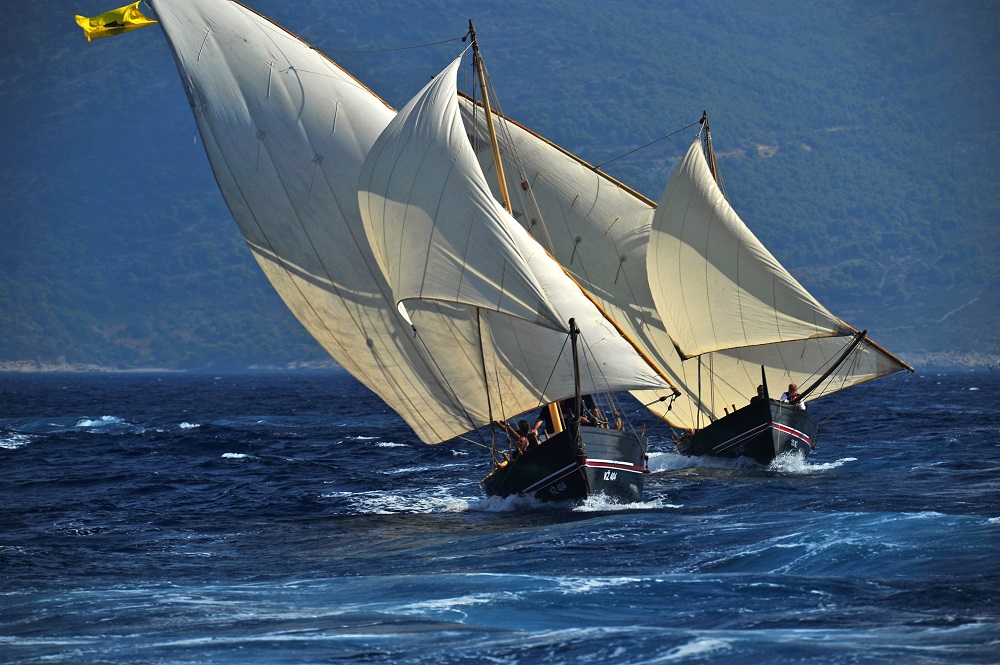
The people of Komiža are proud of Gajeta Falkuša, but it almost disappeared as the storm on Biševo island wrecked the last Gajeta Falkuša named Cicibela.
This terrible damage was repaired by professor Joško Božanić and Velmir Salamon who carried out research on Falkuša for eleven years and all of the aspects essential for this boat, including halieutic, cultural and anthropological interpretation, which included language, lexicon, literature, fishing history, toponymy and anthroponymy, shipbuilding, the art of sailing, traditional weather forecasting, the art of fishing, and even gastronomy.
In 1997 this traditional boat was saved in the form of ''Comeza-Lisboa'', the first falkuša built after many years, as part of the research project of the Cultural Association Ars Halieutica from Komiža. ''Comeza- Lisboa'' was presented at the world expo in Lisbon, Portugal. This launching was a historical moment for Komiža, where old fishing traditions, knowledge and skills were revitalised and presented to locals. Today we have four Gajeta Falkuša boats: Comeza-Lisboa, Mikula, Palagruža and Molo.
Molo is a smaller variant of Falkuša on which children used to learn fishing skills.
Dry stone walling
This piece of UNESCO heritage is an art of its own and is an old tradition which continues to be nurtured on numerous islands and in coastal Croatia, but it's especially interesting on the island of Vis. This type of rural architecture is part of the Vis landscape and has a different form than the rest. The story of dry stone walling is a story about survival, where peasants used their skills in rocky landscapes and securing smaller fertile areas to grow their vineyards and deal with other types of agriculture.
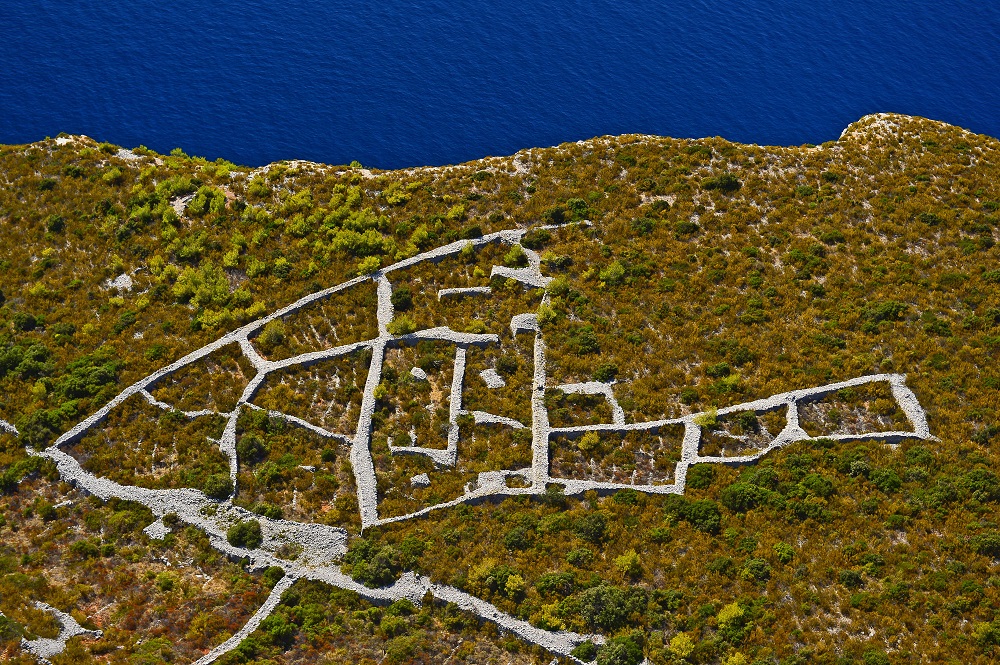
On Vis, the village of Dragodid near Komiža is very well known for its dry stone walling heritage and remains a place for dry stone workshops to this very day.
.jpg)
The Cokavian dialect of Vis
This is another piece of intangible heritage of Croatia and the oldest Slavic dialect in the Eastern Adriatic. It is unique in the fact that it preserves the lexicon from the lingua franca idiom, which is characteristic for the maritime and fishing world. Here is an example of the traditional cokavian dialect of Vis:
U śpȍmen nȍni Juvãni
Śvãku jȕtro
cîn bi źorâ źarudȉla
cîn bi źvȍna źaźvonȉla
ol śnâ bi śe vãrgla
pôk bi źavōpȉla
Ôva Marȉja
śvãki dôn źa pūlnê
kal bi śûnca grûźd śaźrîl
a iź kanpanȅla śe źvûn jōvîl
ol śtolâ bi śe dvȉgla
pôk bi źlãmen
krīźâ ucinȉla
Ôva Marȉja
ondâ jȍpet u śutûn
źajȅcol bi źvûn
a nâ bi pośôl dofinȉla
pôk bi śȅla u kantûn
krȕnicu molȉla
glōvûn obandovãla
kriźȉć buśivãla
i źãrno po źãrno
prȉko pãrśta voltovãla
Ôva Marȉja
i ȍto tãko je nȍna
iś Gūśpûn cavarjãla
trî pūtâ nã don
na plãc źvȍna
molȉtve olpivãla
i da śe nî śvȁ
u molȉtvu pritumbãla
do glũhe źemjê
da nî prĩgla śȉju
śigûr śon
jȍś bi vãvik
naźdrovjãla
Ôvu Marȉju
- Vinko Kalinić (From the collection of songs)
SOURCE(S) (text and photos): UNESCO, Geopark Vis
Find out more about Croatia's incredible UNESCO heritage by following our dedicated lifestyle page.
Zadar's Aquaculture Impresses European Federation of Animal Science
As Morski writes on the 27th of May, 2019, Prof. Dr. Matthias Gauly, a professor at Bolzano University and President of the European Association of Animal Science (EAAP), one of the largest animal breeding associations in Europe, has been in the Zadar area in recent days.
With the help of doc. dr. sc. Ivan Župan from the Department of Ecology, Agronomy and Aquaculture of the University of Zadar, he got better acquainted with Zadar's local aquaculture. Namely, EAAP didn't have a section on this aspect of agricultural production, which was recently established by Dr. Župan. Gauly got to know the production processes which take place in Cromaris and with Kali tuna out in the field, and he's leaving Zadar with positive impressions, according to HRT Radio Zadar.
''Our department was actively involved in the co-organising of the EAAP Congress last year in Dubrovnik, where we presented, along with other participants such as AGRRA and Cromaris, the state of aquaculture and our scientific work. Nearly 2,000 participants from all over the world participated in the congress, and in our section there were thirteen speakers. This year, we continued our activities. So far, we have fifteen registered participants and we're trying to create a working group that would further enhance aquaculture within this association,'' stated Dr. Župan.
A working visit was an opportunity for Dr. Gauly to understand how aquaculture is developed in a county that hold over seven percent of the state's entire share. With deputy professor prof. dr. sc. Slaven Zeljić, they visited Cromaris and Kali Tuna, where they could see how production is done live in the sea. The whole process of production was explained to them, from getting younger fish to the aspects of fish processing, which left an obviously good impression.
''As a department, we want to connect more tightly with the economy, but also with the businesses involved in fisheries and aquaculture, we're closer to the associations that can help them in their production. EAAP covers all aspects of livestock production, poultry farming, cattle breeding, general livestock farming, but so far, we have not included aquaculture as one of the fastest growing branches. This will also provide opportunities for advancement to scientists and businesses,'' said Župan.
EAPP covers a number of topics that are important to manufacturers such as health, genetics, and environmental protection.
Gauly says he has positive impressions of what he saw in Zadar and is impressed with everything he has seen there, in terms of scientific work and in terms of the collaboration with Zadar's local producers.
"I've been convinced that the production takes the environment into account and that it has a future because it's viable. I appreciate that from the beginning, the owners have collaborated with the industry, and given feedback on the state of the environment so researchers can continue to lead them. It is very positive that students are involved in all of this, who have a very critical approach. I've seen a lot of young professional people who can stay here where they are educated and who like to work. Our association also has a platform for young scientists, who will be able to express their potential through it, working with colleagues from other countries,'' noted Gauly.
The EAAP brings together experts from all European countries and better connects them with the industry.
"What I've experienced over these twenty or so years is that we gain a much better understanding among people through co-operation. I think that's more important today than ever. The friends I met at the beginning of my engagement today, I understand now much better than I ever did before. Although we differ, we retain our identities in many things. As far as Zadar University is concerned, it's very active, it's been involved in our activities from the very beginning and I look forward to our future cooperation,'' concluded Gauly.
Make sure to stay up to date by following our dedicated lifestyle page for much more.
Famed Omiš Factory to Close After 97 Years of Work to Become Hotel
As Poslovni Dnevnik writes on the 24th of May, 2019, a protected three-storey building in the Dalmatian town of Omiš, which operated for 97 years as a factory and was constructed back during Austro-Hungarian rule will be redesigned into no less than a hotel in the next two years.
''The Croatian brand of pasta "Cetina" will remain, we've preserved it, as well as all of the jobs from the pasta factory. Twenty-two workers were taken care of, we've all sorted everyting out,'' Ivica Babić, the owner of the bakery and the sales chain "Babić" stated clearly after being requested to shed light on the situation by Slobodna Dalmacija. As of June the 1st, the former pasta factory in Omiš will end its work, after 97 long years.
Namely, the building on the eastern outskirts of Omiš, located at the mouth of Cetina, next to the town's harbour, will be converted into a hotel and thus end the work of the old factor that was otherwise in operation for almost 100 years.
''Nobody's getting put out of work, there are no dismissals. We've made sure to give jobs to all of our workers according to their respective capabilities, someone will be a driver, another will be a salesman... We've had two requests for severance pay, which we have taken care of properly,'' Babić stated when discussing the fate of employees who worked in the factory, which was sold to Krunoslav Šarić two years ago, but the well-known and popular Dalmatian "manistra" continued to be producted, and it will continue to do so, until the very beginning of next month.
''With our strategic partnership we've ensured that the brand will remain, but now production will be relocated to Čakovec. It was necessary to optimise the production of pasta, and because the "Cetina" building in Omiš was dilapidated, it was necessary to invest large amounts of money in its reconstruction or move the factory from the city centre to a more suitable place for production,'' revealed the boss of the Babić chain, expressing his satisfaction with the fact that they have been able to successfully preserve the brand "Cetina", as well as provide new jobs for the factory's former workers.
Make sure to follow our dedicated business and lifestyle pages for much more.
Journey into the Past with Antiquity Days in Zadar!
Fancy a journey back into times gone by in Zadar? The Roman empire, which once dominated almost all of Europe, left a more than noticeable trace on the old face of Zadar, and while much of that can still be seen in many places in this famous Dalmatian city today, it wouldn't be enough without having an event dedicated to the Roman presence on these shores and more specifically in the City of Zadar.
As you probably already know, Zadar, a highly popular Dalmatian destination for tourists from all over the world, is a city with a very, very long history. A large part of that history is from the formerly glorious Roman period. The old city, traditionally known as ''Poluotok'' is full of Roman ruins.
However, that's not where it all begins and ends when it comes to showcasing Zadar's rich history with its long Roman past. That's where Zadar's Antiquity Days come in, with their interactive approach of reviving the spirit of old Roman times.
Traditionally, local students of archaeology from the University of Zadar have been organising the popular Antiquity Days manifestation in cooperation with the Archaeological Museum of Zadar and other generous sponsors.
The program includes a workshop for children, a treasure hunt, book promotions and much more, all rounded off with the final entertainment program held on Zadar's beautiful Forum.
You can see the full schedule of the program by clicking here.
A small procession through the streets of Poluotok, where the emperor and the empress will say hello to citizens and visitors alike will eventually end up on Zadar's Forum. Gladiator fights, oriental dances and a fire show are also will entertain the crowds. There, the emperor will decide on whether or not Zadar and its citizens have been loyal to the Roman Empire. Make sure to be there and enjoy this trip into Zadar's past!
Make sure to follow our dedicated lifestyle page for much more.
Šibenik Continues to Impress with EU Fund Withdrawal for Cultural Heritage
Šibenik is an example of excellent practice when it comes to withdrawing the European Union funds made available to it, and while the rest of Croatia rather unsurprisingly lags in that particular field (among others), it seems that this Dalmatian city is quite easily outshining the rest.
As Novac/Matea Grbac writes on the 21st of May, 2019, although tourism is one of the major economic branches of Croatia, accounting for a significant nineteen percent of the national GDP, it seems that the country's leading individuals in Croatian tourism will have to work a little harder to make sure Croatia's numerous destinations, which were visited by just over 19.4 million tourists last year, manage to really remain competitive in the face of competition.
In order to successfully keep up with increasingly popular European destinations like Greece, an old ''king'' of tourism, and not to mention Turkey, which is returning from a rather tumultuous period, much more than sea and sunshine needs to be placed on offer to would-be tourists and visitors to Croatia. Packed with a wealth of possibilities, is the country really using everything as it could, and should?
For the development of a much more varies tourist offer, Croatia has had a number of different forms of EU funds available to it for almost six years now, more specifically since the country joined the bloc. They're mostly related to the development of rural, regional tourism and OPGs, the reconstruction or building of more private accommodation, the development of domestic entrepreneurship, health, ethno and gastro tourism, as well as what is arguably the most important thing of all - the proper restoration of Croatia's countless pieces of cultural heritage.
Despite having EU funds readily available to it for a variety of purposes, according to increasingly numerous sources in the media, Croatia continues to be rather insufficient in taking proper advantage of that support. However, it seems that we can still find examples of good practice among the tourist destinations of the country and one of them is the historic Dalmatian City of Šibenik.
This beautiful coastal Dalmatian city, one of the few world cities to have been listed on UNESCO's prestigious list with two protected facilities, is an example of just how things should be being done when it comes to EU fund withdrawal in Croatia.
Although Šibenik has been being visited more and more in recent years, it still isn't one of the most visited Croatian destinations, and by the end of October last year, it counted only 287,872 visitors, Šibenik is certainly a pioneer in withdrawing funds made available to it by the EU when it comes to restoring its cultural heritage.
For the reconstruction of its famed fortification system consisting of three land and one sea fortress, Šibenik has withdrawn approximately 56 million kuna from EU funds over the last several years.
Financed by the European Regional Development Fund, totalling more than 1.6 million euro, of which the EU co-financed almost a million euro, the Fortress of St. Mihovil became an imposing open-air amphitheatrical stage with 1,077 seats. Thus, this ancient historical fortress which once used to serve as the defensive wall of the city, plays its current role for Šibenik of an urban and dynamic gathering place for both the local population as well as visitors to this stunning city.
The second in the series comes Šubićevac Fortress, or Barone, which has been transformed into the gastronomic centre of Šibenik. The reconstruction of this facility stood at slightly more than 1.3 million euro, and just like the fortress of St. Mihovil, it received most of these funds from EU funds, more specifically, 993,000 euro.
Although still unfinished, the farthest fortress from the city, Sv. Ivan, is also part of the ''Fortess of Culture of Šibenik'' and is financed with European Union money. The entire project was worth 49 million kuna, and as much as 41 million kuna came from the Regional Development Fund.
The fact that the entire project proved to be successful is the fact that more than 200,000 tourists visited last year alone, while revenues in 2018 amounting to a more than impressive 6.7 million kuna.
With the synergy of natural resources, culture and domestic products, Šibenik has proved that with planning and smart investment, every Croatian tourist destination can turn into a rounded whole that will meet the needs of even the most demanding tourists.
Make sure to follow our dedicated lifestyle page for much more.
Click here for the original article by Matea Grbac for Novac/Jutarnji
New Fast Connection from Split Airport to Bol Starting on 1 June
Something new is on the cards for the very beginning of next month in time for the height of the tourist season for those wanting a direct line from Split Airport to Bol on the nearby island of Brač, the third largest island in Croatia.
As Morski writes on the 17th of May, 2019, as of the 1st of June 2019 to the 15th of September 2019, the new fast-freight company Adriatic Fast Ferries d.o.o. will introduce a fast-freight line four times a day from Split Airport to Bol on the central Dalmatian island of Brač. There will be two direct connections and two lines which will head to Bol via Split's busy ferry port.
The direct connection will take one hour from Split Airport to Bol, and the line which will stop at Split's ferry port will take an hour and twenty minutes. There will be three lines in place from Bol to Split per day, according to a report from the local portal Bol info.
Unlike for other ferries and connections, tickets for this new line can only be purchased online at the ship's website.
The catamaran for this line was built back in 1999 at the FBM Marine Ltd shipyard and was purchased from the English company Red Jet. The catamaran is 33 metres long and has a capacity of 190 passengers.
Make sure to follow our dedicated lifestyle and travel pages for much more.

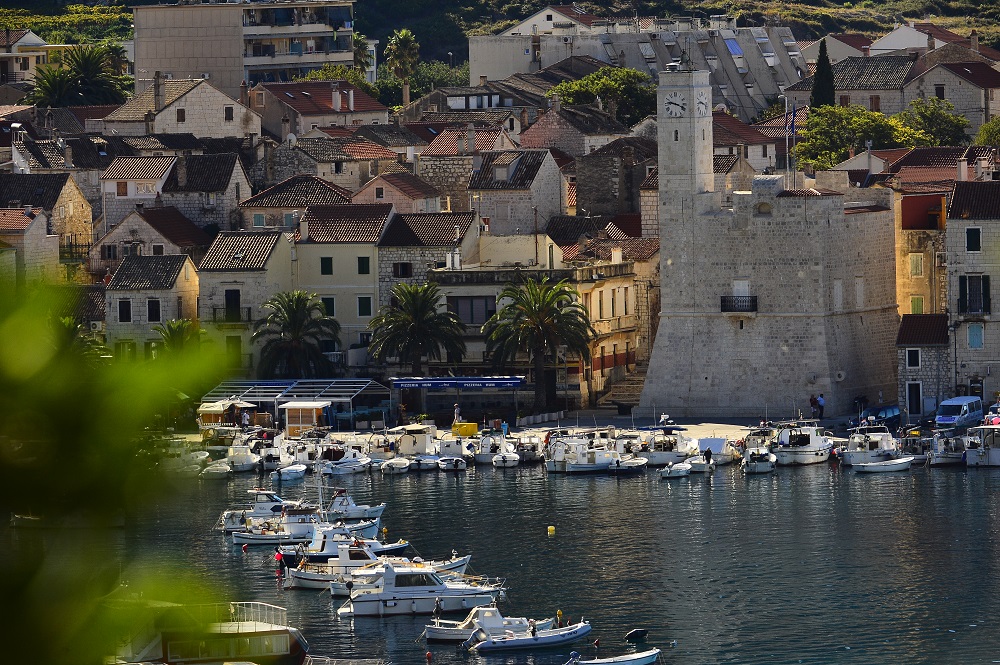
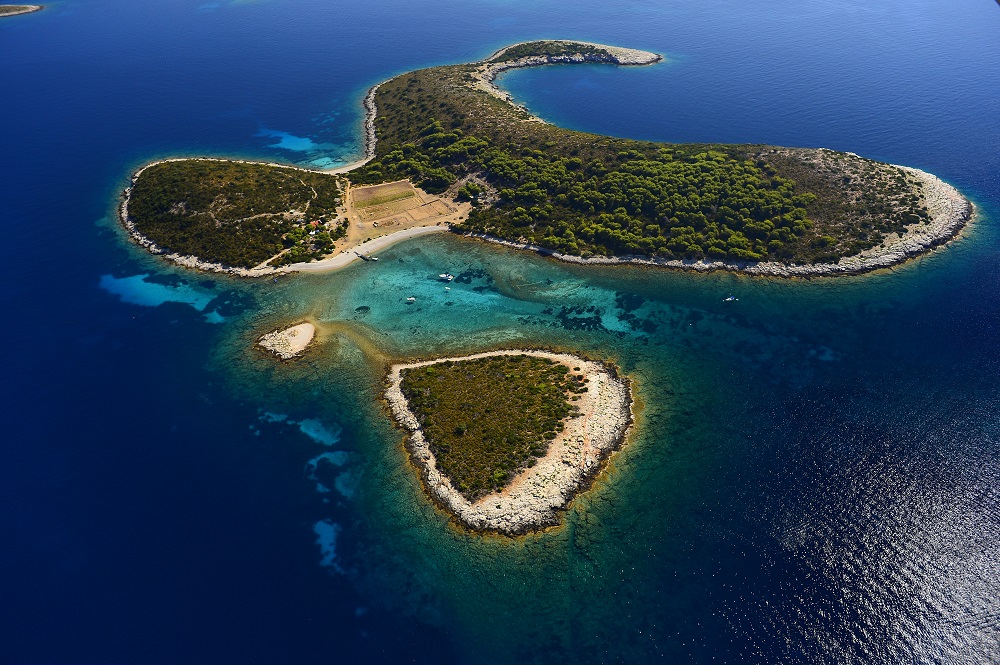
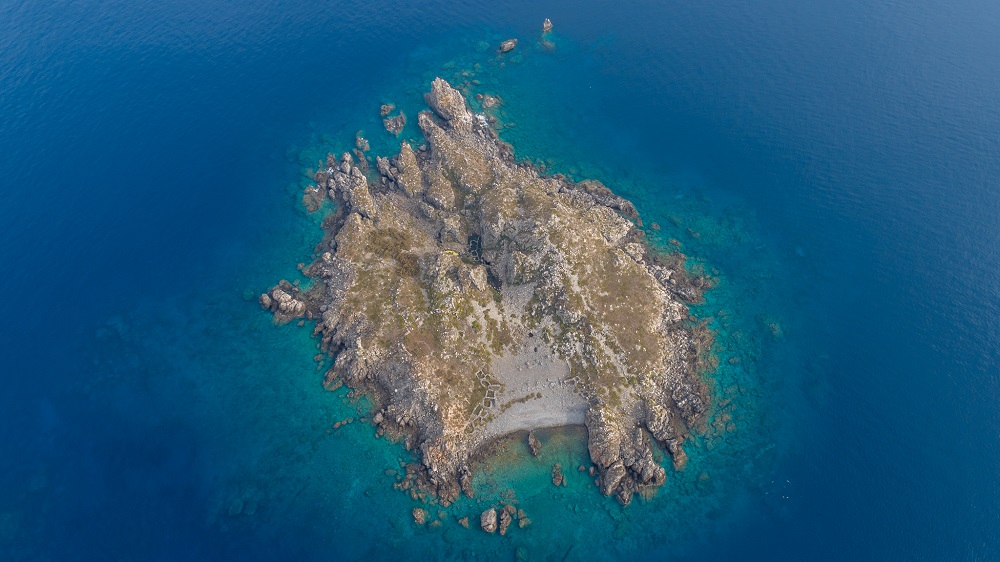
.JPG)

